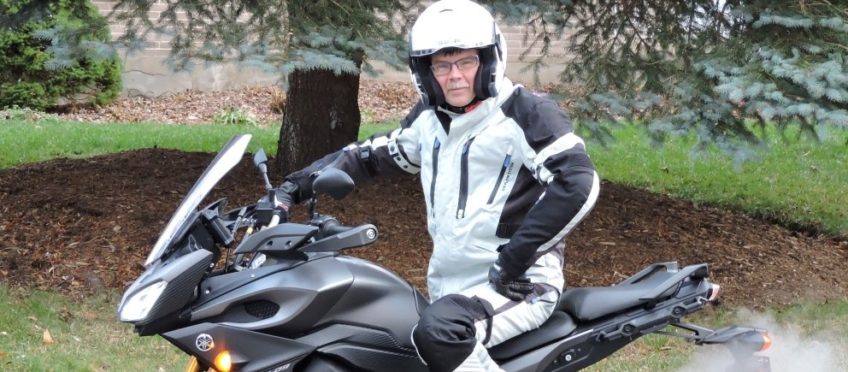It has been a long winter and we are excited to get our motorcycles out. Are you ready?
After not riding for a number of months our skills are rusty. I always take a bike to a large parking lot and try some slow speed manoeuvers to practice my clutch control and balance with my feet on the pegs. Then I try some stopping by gradually working up the approach speeds before getting on both brakes. Be careful since the pavement may still have sand or salt dust on it. A wiser move may be to book a day of some extra rider training. A refresher course or advanced training that puts you through some collision avoidance practice is money well spent!
Do you have the correct riding gear for spring temperature fluctuations? It could be nice and warm for afternoon rides but, morning and night time could be near freezing. Watch for black ice and dress with layers that you can add or delete with thermometer changes.
Is your bike ready? The worst thing for our mechanical beasts is sitting dormant for the winter. Check for mice in your air box. Also, check your tires for pressure and tread condition. How old are your tires? Rubber hardens with age and exposure to light. The tread may look fantastic but, old tires can get as hard as a hockey puck and reduce traction when you need it most. Is your battery properly charged with the cold cranking power that spring temperatures are going to challenge? Dealerships sell a lot of batteries in April and May due to poor winter storage and maintenance. Are your brakes in perfect condition? Hydraulic fluid attracts moisture and old brake fluid with condensation (water) in it will gradually reduce your braking performance. If you haven’t done it before don’t try working on your brakes by watching YouTube videos on how to do it. It is too important to your survival when riding. Take your bike to the pro at the dealership. I would have them perform a spring safety inspection that will let you know any issues before you get back out on the road. Tune-ups cost money but, save you money in the long run and can prevent crashes due to mechanical failures. “Pay me now or pay me more later” rings true with motorcycle preventative maintenance.
Other things to consider:
Traction can be terrible in the spring. Left over sand or salt dust has crashed many riders usually in corners. So, reduce your usual speed on curves and when approaching stops. With colder temperatures, your tires have less traction until they warm up. The road is also colder so, again be more diligent with cracking the throttle, scraping the pegs or braking aggressively. Spring is pothole season in Canada so, be extra careful to avoid them.
Other road users are not used to sharing the roads with motorcycles. Not enough drivers actually shoulder check and your bike can easily be lost in a door mirrors blind spot. Anticipate that other traffic won’t see you on your bike. Ride cautiously and assume the car might turn left in front of you at the intersection. The approaching vehicle that cuts off the motorcyclist is the second highest causation factor in motorcycle fatalities. Don’t ride above the posted speed in city traffic and expect to be able to stop in an emergency when you get cut off. The at-fault driver often says “Sorry I didn’t see you”. Car driver’s brains are wired to look for other car drivers, especially in the spring. Sometimes they see you and simply misjudge your approach speed. It is harder to judge the approach speed of a skinny motorcycle.
The third factor most written on police reports at a motorcyclist fatality is “Hit from behind”. Do you shoulder check after every stop you make in traffic? A tip is to stop at least a bike length behind the vehicle in front of you. Then shoulder check as soon as your left foot hits the ground. If you see a following vehicle that looks like it can’t stop then get out of there. Ride up between the stopped vehicles in front of you. You won’t get a ticket for white lining unless you stay there for the rest of the way home.
Police are also not used to seeing us. A speeding bike will stand out more in the spring so, be careful that your right wrist isn’t hooked up to your excitement of being back out riding. Please remember that excessive speed is the leading causation factor in street motorcycle rider fatalities.
I hope you have a fantastic riding season. Making it safely to the fall depends a lot on your attitude, experience and preparedness. No one is too good a rider not to try and improve their skills.
© Story and photo by Clinton Smout









join the conversation